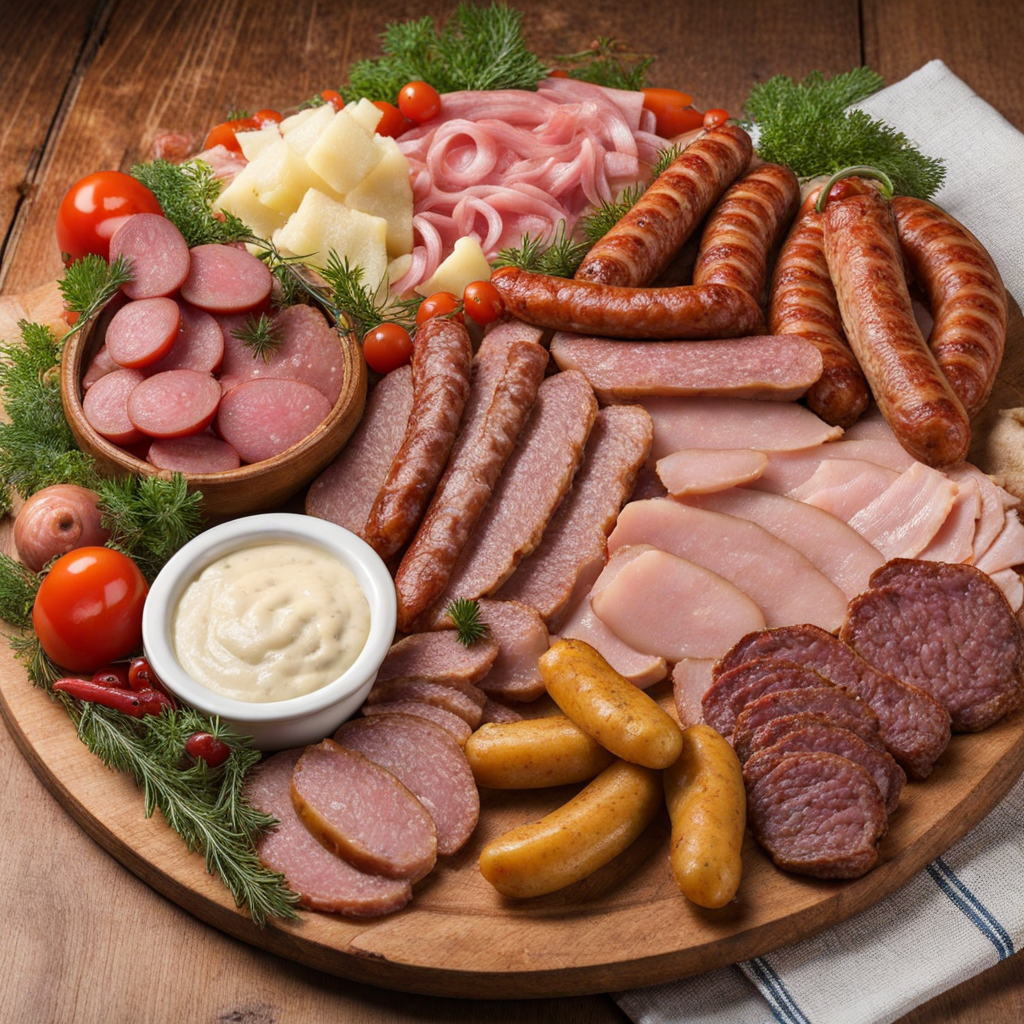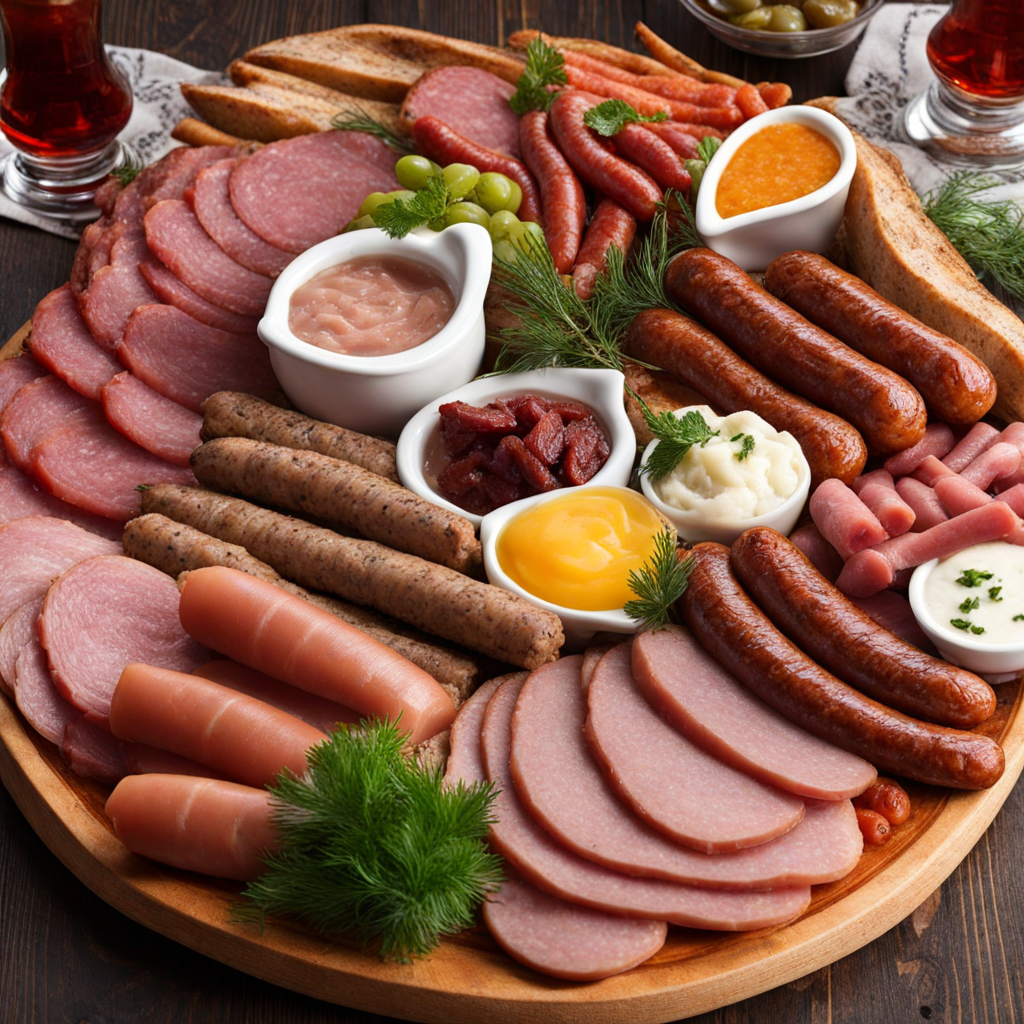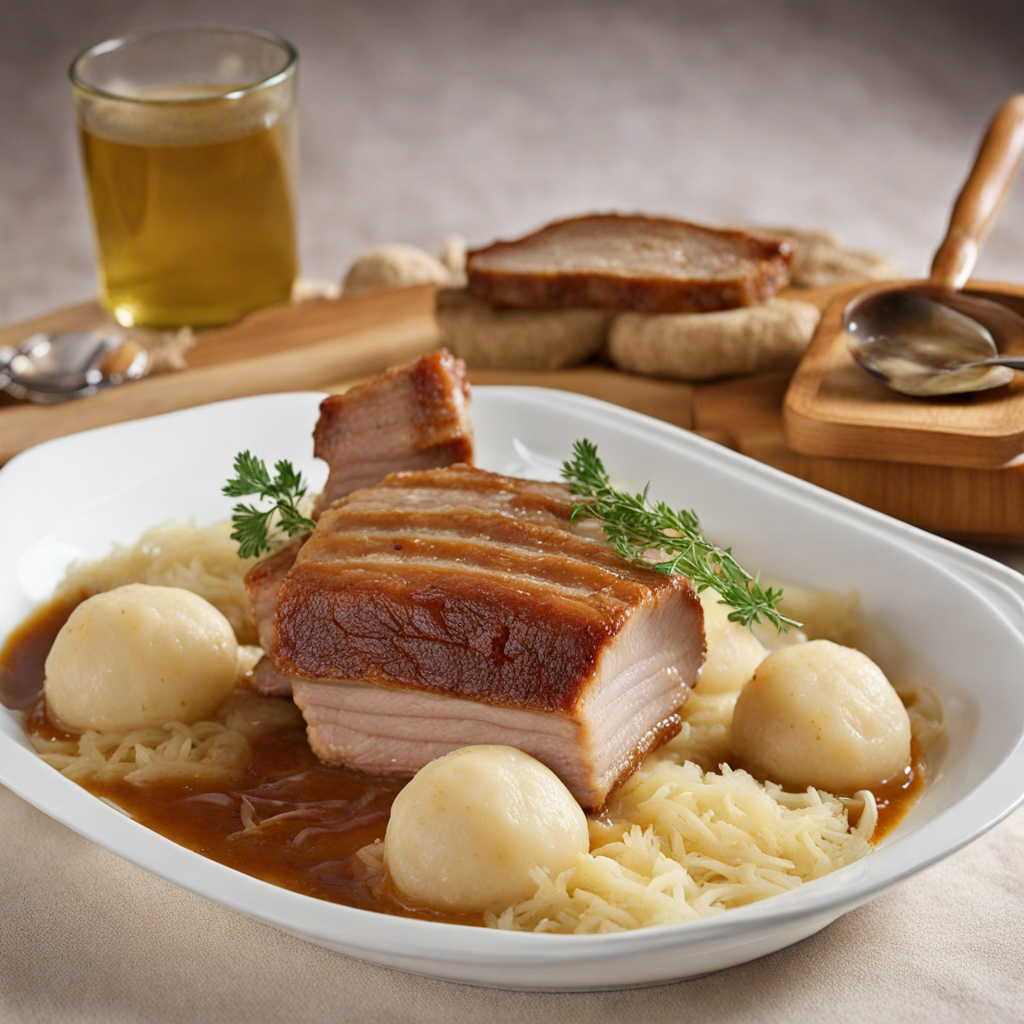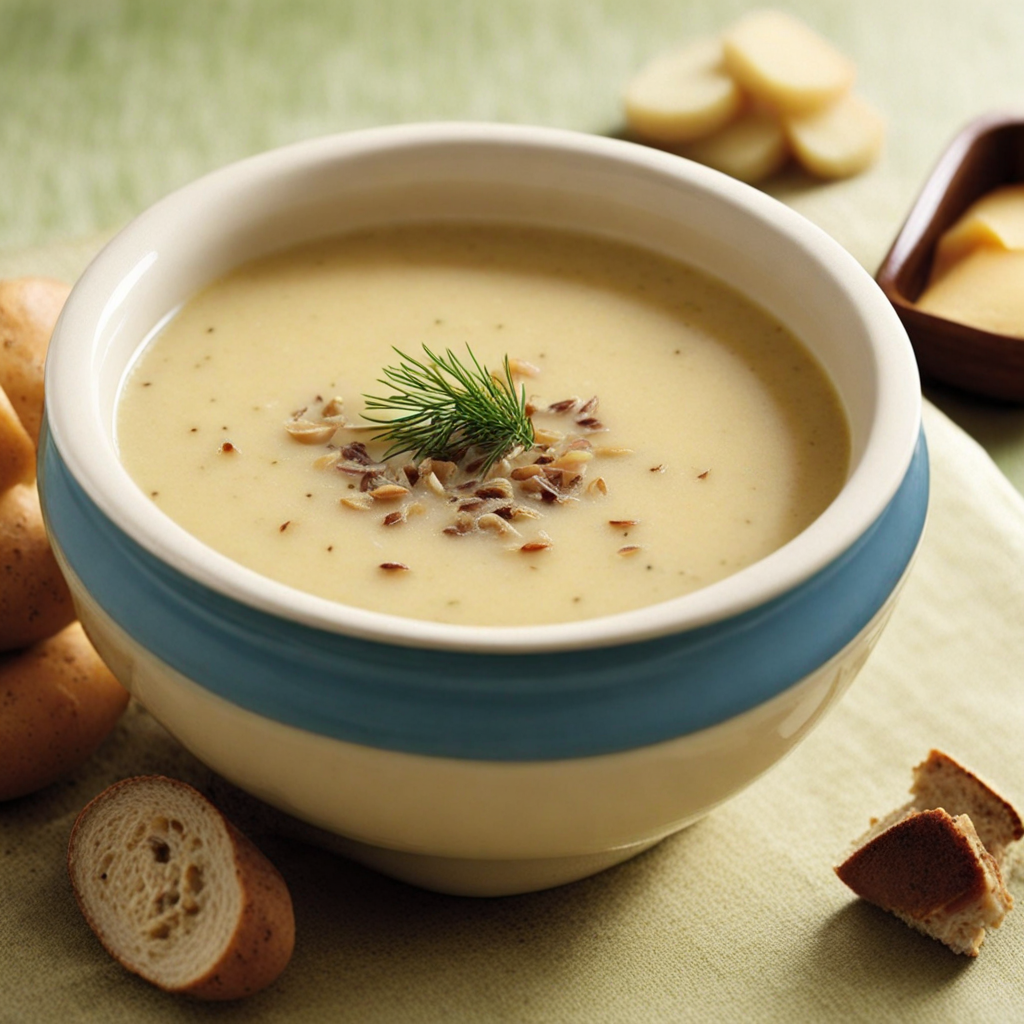Bohemian Platter
The Bohemian Platter is a delightful ensemble of traditional Czech flavors, showcasing the rich culinary heritage of the Czech Republic. At its core, this platter features succulent slices of svíčková, a marinated beef dish served with a creamy vegetable sauce that offers a balance of savory and sweet notes. Accompanying the tender beef are traditional Czech dumplings, known as knedlíky, which are soft, pillowy, and perfect for soaking up the delectable sauce. Each bite transports you to the charming landscapes of Bohemia, as the comforting textures and flavors meld together harmoniously. Adding to the experience, the platter often includes a variety of pickles and fermented vegetables, such as pickled cabbage and gherkins, providing a refreshing crunch that contrasts beautifully with the rich meats and sauces. To further elevate the flavor profile, a sprinkle of fresh herbs, like dill or parsley, is often added, enhancing the dish's overall aromatic quality. The combination of these elements not only celebrates the essence of Czech cuisine but also invites you to explore the delightful interplay of flavors and textures that define this uniquely satisfying meal. Finally, to complete your Bohemian Platter experience, a side of traditional Czech potato salad adds a creamy, tangy flavor that perfectly balances the savory components of the dish. This salad is typically made with boiled potatoes, carrots, and peas, all tossed in a rich mayonnaise dressing, making it a beloved staple at any Czech gathering. As you savor each component of the platter, you're not just enjoying a meal; you're indulging in a culinary journey that reflects the warmth and hospitality of the Czech people, making the Bohemian Platter a must-try for any food enthusiast looking to expand their palate.
How It Became This Dish
The History of Český Talíř: A Culinary Journey Through Czech Culture #### Origins The term "Český talíř," which translates to "Czech plate," encapsulates a culinary tradition that reflects the rich tapestry of Czech history, culture, and geography. The origins of this concept can be traced back to the medieval period when the Czech lands—comprising modern-day Czech Republic—were influenced by a myriad of cultures due to trade routes, conquests, and the mingling of various ethnic groups. The foundation of Czech cuisine is primarily rooted in the agricultural practices of the region, with staples like grains, potatoes, and root vegetables forming the backbone of many dishes. In the Bohemian region, the culinary landscape began to evolve significantly in the 14th century during the reign of Charles IV. The establishment of Prague as a cultural hub drew chefs and culinary influences from across Europe, leading to the incorporation of spices and cooking techniques that had previously been foreign to the Czech palate. Dishes began to emerge that celebrated local ingredients while also embracing new flavors, setting the stage for what would eventually be recognized as the Czech plate. #### Cultural Significance The Český talíř is not just a meal; it is a reflection of national identity and the communal spirit of Czech people. It embodies the traditional values of hospitality and the importance of family gatherings, where food plays a central role in bonding. In many households, the preparation of a Český talíř is seen as an art form, with recipes passed down through generations, often accompanied by stories and traditions that enrich the dining experience. The plate itself is traditionally filled with a variety of foods that symbolize abundance and the bounty of the land. Common elements include meats, such as roasted pork or beef, which signify strength and prosperity, alongside side dishes like knedlíky (dumplings) and sauerkraut that represent the agricultural roots of the region. Seasonal vegetables add freshness and color, while traditional sauces, such as the rich and creamy svíčková, enhance the flavors, creating a harmonious balance on the plate. Historically, the Český talíř has also served as a canvas for expressing regional pride. Different areas of the Czech Republic have their distinctive takes on this culinary tradition, often influenced by local ingredients and historical events. For instance, the Moravian plate may include specialties like grilled sausages and potato salad, while the Silesian version might feature goulash and a more robust use of spices, reflecting the region's unique cultural influences. #### Development Over Time As the centuries progressed, so did the traditions surrounding the Český talíř. The Austro-Hungarian Empire, which encompassed the Czech lands from the late 19th century until the early 20th century, introduced further culinary diversification. This period saw the fusion of Czech dishes with those from Hungary, Austria, and Italy, creating a vibrant fusion that would influence what a Czech plate represents today. It was during this era that the importance of presentation also gained prominence; meals became more elaborate, with a focus on visual appeal. The interwar period between World War I and World War II was another critical time for Czech cuisine. With the establishment of Czechoslovakia, there was a renewed sense of national identity that permeated through various aspects of life, including food. The Český talíř became a symbol of solidarity and nationalism, especially during times of political upheaval. Home-cooked meals became a way to preserve cultural heritage, as families sought to maintain their traditions in the face of modernization and external influences. The post-World War II era brought significant changes to Czech cuisine, especially with the advent of socialism in 1948. Food scarcity and rationing meant that many families had to adapt their traditional recipes, leading to a reliance on simpler, more economical ingredients. The Český talíř, while still a vital part of family life, reflected these challenges, often showcasing resourcefulness and creativity in the kitchen. Traditional recipes were modified, and new cooking methods were adopted, including the use of canned goods and frozen foods. With the fall of communism in 1989, Czech cuisine experienced a renaissance. As the country opened up to global influences, chefs began to experiment with traditional recipes while incorporating international flavors and techniques. This culinary revival saw the rise of modern interpretations of the Český talíř, where chefs would elevate the classic components into gourmet dishes, reflecting a blend of tradition and innovation. The return to fresh, local ingredients became a priority as the farm-to-table movement gained traction, reigniting interest in regional specialties. #### Contemporary Perspective Today, the Český talíř continues to be a point of pride for Czechs both at home and abroad. It has transcended its origins to become a symbol of comfort and community, often enjoyed during holidays, celebrations, and family gatherings. Restaurants across the Czech Republic now feature modern renditions of the traditional plate, showcasing local ingredients and creative interpretations that honor its roots while appealing to contemporary palates. Moreover, the Czech Republic's growing interest in gastronomy has led to a resurgence in culinary tourism, with visitors seeking authentic experiences that include traditional meals like the Český talíř. Food festivals and markets celebrate local produce, and chefs are increasingly engaging with the history of their dishes, fostering a deeper appreciation for the cultural significance behind the food. In essence, the Český talíř is more than just a meal; it is a narrative woven into the fabric of Czech life. It tells the story of a nation that has endured and evolved through centuries, marked by a strong sense of identity and community. As the culinary landscape continues to change, the Český talíř remains a cherished symbol of Czech heritage, inviting all to partake in its rich history and delectable flavors. Whether enjoyed in a cozy home or a bustling restaurant, the Český talíř serves as a delicious reminder of the past while looking forward to the future of Czech cuisine.
You may like
Discover local flavors from Czech Republic







